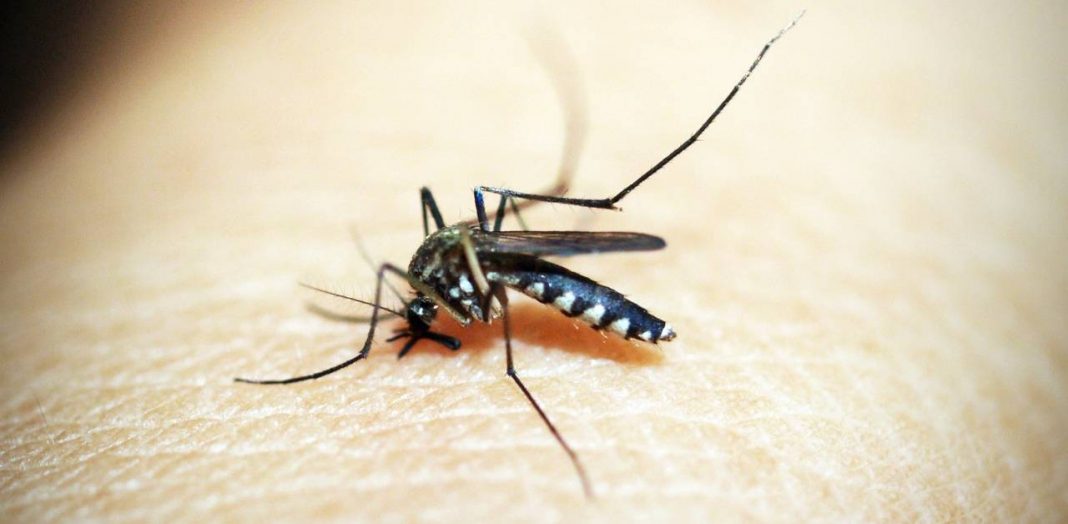UPDATED February 10, 2022 This piece has been updated to reflect the emergence of new technology


Christian Mathews Security Writer
One thing we can always agree on, bugs are creepy. From wasps that turn caterpillars into zombies to protect their young, to spiders using hydraulics in their legs, bugs are outright scary. However, apart from the scary bit, some bugs can and are known to harm humans, either by spreading disease or even random attacks. Knowing what bug repellent for yard to use, can go a long way to protect you and your family.
1Types of Bugs to Look out for
Let’s first clarify on this. Not all bugs are bad/harmful. Think of butterflies and bees. However, there are bugs you should totally avoid. If you find them in your yard, or house, the best thing you can do is get them out of your yard as fast as possible, while ensuring they can’t come back.
Here is a list of bugs you should look out for:
Mosquitoes
Though they may seem harmless, save for the irritating buzz and constant bites, mosquitoes transmit a lot of different diseases. According to Zevo, of the 40,000 species of mosquitoes (they’re that many) 100 species transmit diseases like malaria, elephantiasis, yellow fever, zika among other nasty diseases.
Spiders
All spiders are equally frightening, but when it comes to venom, the black widow spider wins. With a venom that is 15 times stronger than a rattlesnake’s venom, the black widow spider is one you don’t want to be around your house or yard.To identify a black widow spider, look out for a black spider that has 2 red spots.
Tarantulas – though not really poisonous, compared to the black widow, tarantulas are big, scary and can give you a nasty bite. You definitely don’t want them anywhere in your house or yard.
Bees
All bees are good to have around, helping with pollination and all that, but these kind are known to attack/sting people and pets more frequently.
Termites
These bugs are real trouble. From causing paint to peel off, to chewing through wood, they are to be removed from your house/yard at all costs. Unless of course you love having creaking floors, peeled paint on the wall or even a destroyed picket fence, heck termites can even build an anthill right in your yard.
Millipedes and centipedes
These two bugs are the creepiest of them all. But it’s centipedes that steal the show. Centipedes are carnivorous, and they have venom.
So aside from the fact that they are scary, centipedes can give you a painful sting.
They also emit a smelly fluid when disturbed. If you happen to come across any of these bugs, try by all means to get rid of them and prevent them from coming back.
Other bugs
You should equally look out for: cockroaches, brown recluse spiders (at this point, it should be just all spiders), scorpions, houseflies, ticks, horseflies, ants and wasps.
2Different types of solutions to try
Devices
Otherwise known as pest control devices, they have largely been touted as a hoax. Manufacturers claim it works by emitting ultrasonic and certain radio frequencies which confuse and irritate bugs, while having no effect on humans.
Some are also said to use electromagnetic energy which disorient bugs, by affecting their nervous systems. This is mostly effective with large bugs and rodents.
These claims have been opposed by the Federal Trade Commission, which in 2003 required manufacturers like Global Instruments to first prove (scientifically) the efficiency of their products, before presenting them to consumers. However, you can always try these devices, some of them work.
Sprays
This is not a solution, but rather a means of dispensing the chemical repellents. Bug repellent for yard sprays may have natural chemicals like pyrethrin, or even synthetic chemicals which either repel bugs, or paralyze before killing the bugs.
Candles/ odor dispensers
They work pretty much the same as chemical repellents. When deployed, these candles and odor dispensers release odor which though harmless and even odorless to humans, repel these bugs.
Chemicals
These are the most effective at controlling bugs, especially in a large outdoor setting. With chemical control, you can have repellents which do just that. They repel bugs, causing them to leave your yard, and in some cases discourage them from coming back. You can also have chemical control which works by paralyzing bugs and eventually killing these bugs.
Biological
This method is rarely talked about, and equally it’s also the least used. Essentially it works by introducing a harmless insect/animal to your yard, and they feed on the bugs you wish to get rid of. On a larger scale, this method is the best method of bug/pest control. But it can also be applied in your yard. Next time you see a ladybug/ladybugs in your yard, let it be. Lady birds prey on aphids, and some other small bugs.
3Best options for health/ safety of family and pets
Now that you know all that, you must wonder which bug repellent for yard is the best for the health and safety of your family and pets. As much as you may want to get rid of these bugs, the health and safety of your family and pets should always be a priority.
The first option that comes to mind, is biological. If you happen to have an extensive backyard, consider employing biological control to deal with bugs. Not only is it cost effective, but also safer in the long run, as the biological agents you use won’t be a problem to you, your family or your pets.
The other best option is chemical control. But there’s a catch to it.
You’ll need to consult a professional, someone who knows all about bug control chemicals. This is to ensure you get only chemicals that won’t affect your family, or pets.
The other catch to this is cost. Aside from incurring professional costs, you should be ready to pay more for the best bug control chemicals.
4Conclusion
That’s it for bug repellent for yard.
Hope you now know which bugs to look out for, and the necessary action, including but not limited to bug repellents; and even the best options you can choose to ensure the health and safety of your family and your pets.

















































